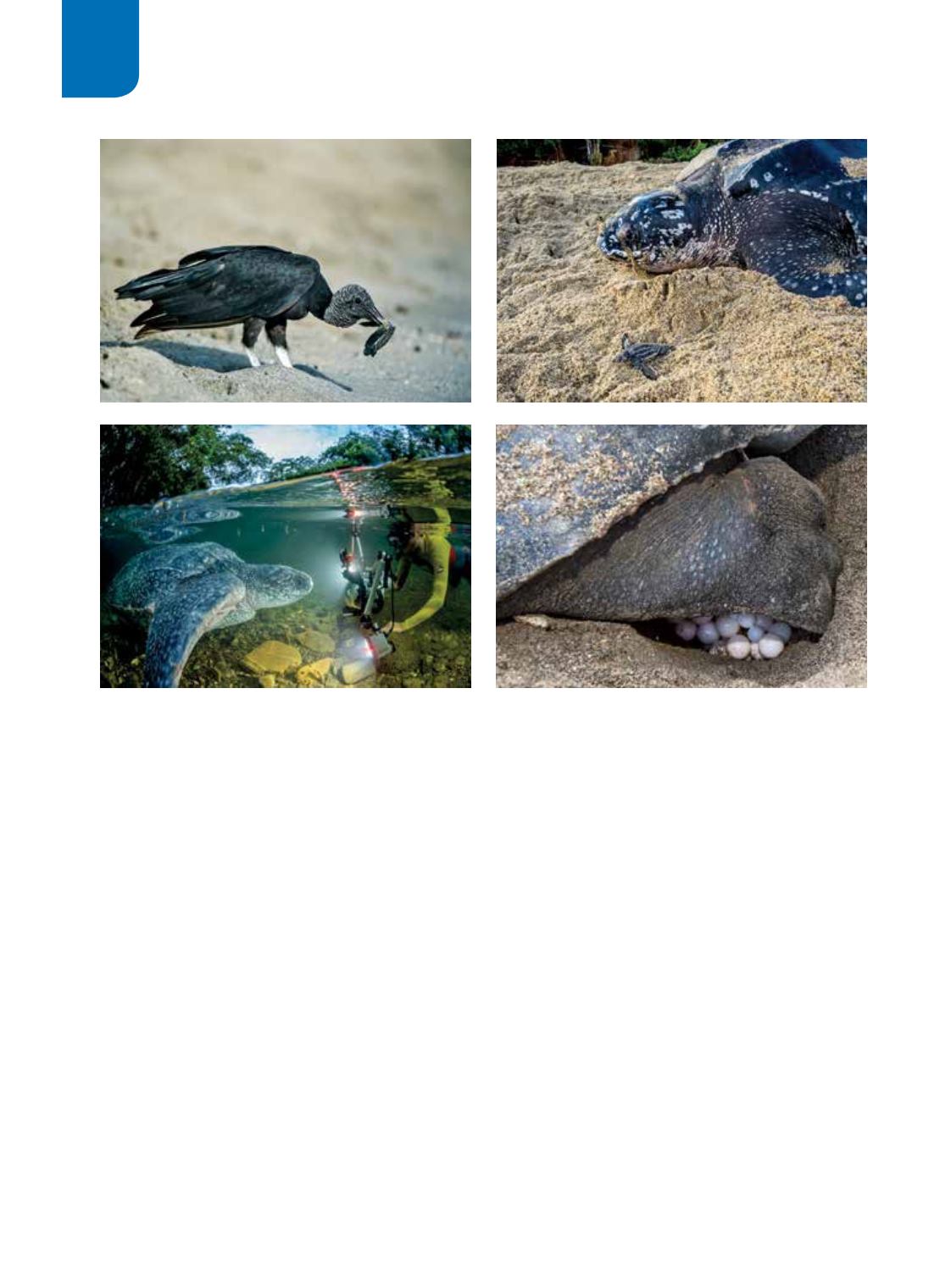

A 100-million-year-old species, the leatherback is not
your ordinary sea turtle — it’s almost an insult to call
it one. In a class entirely its own, it is one of the largest
reptiles, capable of reaching 7 feet and 1,500 pounds
or more. Shaped like a giant, hydrodynamic teardrop,
leatherbacks can dive to more than 3,000 feet — deeper
than most whales — to eat jellyfish, their main food
source. When feasting on these gelatinous invertebrates
in the subarctic, leatherbacks keep their bodies warmer
than the surrounding water, thanks to their huge body
mass and a sophisticated circulatory system. This
special adaptation, called gigantothermy, allows these
creatures to go where other reptiles would freeze and
extends the range of the species to the point that it’s
one of the widest-ranging animals. They are citizens of
the world: Indonesian leatherbacks travel to Monterey
Bay, Calif., to forage, while Trinidad’s leatherbacks visit
eastern Canadian waters in the summer. One tagged on
Panama’s Caribbean coast was later found alive in a net
in Italy and successfully released.
Our adventure with that lost leatherback on our first
morning in Trinidad capped off what would be the first
of several grueling all-nighters on our trip. While I have
photographed them underwater where I live in Florida,
I didn’t have any photos of nesting leatherbacks. When
one of my buddies with local connections in Trinidad
suggested we head down there, I agreed immediately.
During peak nesting season in May and June, some
of the busiest beaches in Trinidad receive nearly 400
nesting turtles every night.
For the next week we settled into a demanding
routine: After dinner we and our guides would head out
in pairs to local beaches to work. The red glow of our
headlamps revealed clusters of leatherbacks — completely
oblivious to our presence — entering and leaving the
pounding surf and sometimes even crawling over each
other and accidentally destroying nests. These excursions
were arduous. The uneven terrain, heat, sand, darkness,
smell (from broken eggs and dead embryos), rain and
biting insects made it extremely tough to remain focused.
We would return to our simple accommodations
in the morning for breakfast, showers and sleep.
Random turtles nesting under the blazing tropical
sun or unlucky hatchlings being devoured by vultures
and frigatebirds broke the midday quiet and made us
scramble for our cameras. In the late afternoons we
explored the coastline by boat with fishermen, who
took us to a staging area offshore where leatherbacks
24
|
WINTER 2016
DIVE SLATE
LEATHERBACKS
















